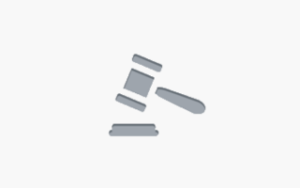
Real estate and inheritance law
At Mortelliti Law Firm, we specialize in matters related to real estate and inheritance in Italy specifically in Calabria. It’s always beneficial to seek legal

At Mortelliti Law Firm, we specialize in matters related to real estate and inheritance in Italy specifically in Calabria. It’s always beneficial to seek legal

The firm provides legal assistance and consultancy to both public administrations and businesses and private individuals for matters relating to administrative law. Issues relating to

The Mortelliti Law Firm has earned a good reputation and experience by assisting prestigious insurance and banking companies with accuracy and profit. Insurance Law The

Attorney Francesco Mortelliti holds the esteemed position of Honorary Consul of the Republic of the Philippines. With robust international experience and proficiency in English, our

Our law firm boasts a team of highly specialized professionals in criminal matters, ready to assist both private and professional clients throughout every phase of

The fusion of in-depth technical knowledge with a solid legal basis is what distinguishes the Mortelliti Law Firm from others. Our specialization in Information Technology

The Mortelliti Law Firm stands as a beacon in the legal landscape for matters concerning labor law, both in the private sector and in the

The Mortelliti Law Firm, with its established expertise in the legal field, passionately and professionally offers legal consultation and representation, ensuring top-tier services to all
ITALIAN REPUBLIC
IN THE NAME OF THE ITALIAN PEOPLE
COURT OF ROME
NINTH CIVIL SECTION
Specialized section in the field of Industrial and Intellectual Property
composed of the magistrates:
Dr. Tommaso MARVASI – President –
Dr. Marina MELONI – Judge –
Dr. Giulia IOFRIDA – Judge rel. –
meeting in chambers, issued the following
JUDGMENT
in the first instance civil case registered under No. 65167 of the general litigation register of the year 2004 put up for deliberation at the hearing of 10/18/2007 (with deadline for filing appearances conclusions and replies of days 60 + 20) and
concerning
YES., in the person of the legal representative pt, elect. dom.ta in Rome Viale (omissis) (SI.) at the office of the lawyers Al.Am. and Gi.Pa. who represents and defends her by proxy in deeds
PLAINTIFF
and
You. SpA, in the person of the legal representative pt, elect. dom.ta in Roma Via (omissis) at the office of the lawyer Ma.Ra. who represents and defends it by proxy in documents together with the lawyers Prof. Ga.Ra. and Di.Sc.
DEFENDANT SUBJECT
: Copyright.
Conduct of the process
With a writ of summons notified on 30/8 – 10/92004, SI., in the person of the legal representative pt, operating public law body, pursuant to art. 180 Copyright Law, the intermediation activity for the exercise of the rights of representation, performance, acting, radio broadcasting and mechanical and cinematographic reproduction of works protected by the LA was brought before the Court of Rome, Section Specialized in the matter of Industrial and Intellectual Property, the telecommunications company Ti. SpA, in the person of the legal representative pt, with registered office in Cagliari, owner and owner of the Internet site (omissis), to hear ascertain the undue use by the defendant of “online” on the Internet, – with violation of the articles 12, 13, 16 and 17 LA, in the absence of authorization from the author, his heirs and for them from SI., and with contractual breach, in relation to the art. 10 of the License contract, signed by Ti., on 8/21/2001, with SI., for the authorization of the online dissemination of works belonging to the musical repertoire protected, in another Section, by SI. – of works of figurative art, protected by Law 633/1941 (art. 2) and protected by SI. as they fall within the OL section. (doc. 5 ter.), in the link on the Internet (omissis), with requests for an injunction against the further use and illicit exploitation of such works, with the setting of a penalty for each day of violation of the order given, and of condemnation of the same defendant to the payment of a sum of no less than Euro 40,000.00, by way of copyright,
In particular, the plaintiff deduced that, on the defendant’s website, content provider and server owner Ti. SpA, in the link called “(omissis)”, where further hypertext links were available (“(omissis)”, “(omissis)”, “(omissis)”, “(omissis)” and “(omissis)”), could find reproductions of various paintings by famous painters (at least 160/179 artists present, with reproductions of no less than ten works for each of them), protected by the institution, which could be enlarged, sent via e-mail, as a game postcard (with images created through collages of famous paintings) and as a special print, without the defendant ever having asked SI for authorization.
At the first hearing pursuant to art. 180 cpc of 11/25/2004, appeared in court, belatedly pursuant to articles. 166 – 167 of the Code of Civil Procedure, the defendant Ti., requesting the rejection of the plaintiffs’ requests, after ascertaining, primarily, the legitimacy of the use of works of figurative art on its Ti. site, as constituting the exercise of the right to report in in relation to current events in the world of art (being the online reproductions of graphic works by various authors functional to the presentation of exhibitions of works of art by the same author, in progress) and therefore fully falling within the exception to the rights of exclusive reproduction of intellectual works (with consequent non-obligation of the requested payment of a fee), pursuant to art. 65 2nd paragraph LA in the text introduced as a result of Legislative Decree 68/2003, implementing Directive 2001/20/EC; You. also raised, on a preliminary basis, the nullity of the writ of summons, due to the indeterminacy of the facts constituting the application (identity of the owners of the infringed copyright), as well as asking, where deemed necessary, the suspension of the proceedings for referral, by a side, to the Constitutional Court, in order to hear the opposition to the articles declared. 3 and 24 of the Constitution of Legislative Decree 168/2003, establishing the Specialized Sections in the field of Industrial Property, in the part in which it attributed to the Section. Spec. PI of Rome the competence to hear disputes regarding industrial and intellectual property, falling, according to the ordinary rules, within the jurisdiction of the Court of Cagliari, and, on the other hand, to the EC Court of Justice, for a preliminary question on the interpretation of Directive 2001/20/EC (art. 5, in particular, contemplating, as an exemption from the right to exclusive use of intellectual works, “journalistic information purposes” , and whether the same legislation, correctly interpreted, allowed the legitimate publication of graphic works by an author in support of the information provided to the public of an ongoing exhibition of the same author and in the absence of payment of a fee) and the corresponding regulation national (art. 65 paragraph 2, LA), ex art. 234 EC Treaty. On the merits, the defendant deduced that, in the thematic channel “(omissis)” of its site “(omissis)” information was essentially provided to its visitors, about Italian exhibitions and museums and everything new that was happening in the art world in Italy, with reproduction, alongside the text of the news, of some works relating to it, in compliance with the provisions of the art. 65 LA, paragraph 2, and disregarded, pursuant to articles. 2712 and 2719 cc, the documents produced by SI., such as printouts allegedly relating to the website “(omissis)”, because they lack a certain date and any probative value, being different from the originals and contested in content and provenance.
At the first hearing, pursuant to art. 183 cpc, dated 10/3/2005, the parties did not appear personally and neither the attempt at conciliation nor the free interrogation could be carried out.
With an order issued on 3/6/2005, the investigating judge rejected the request, made by the defendant, to refer the preliminary interpretative question to the EU Court of Justice, deeming the referral unnecessary, involving the judgment beforehand with questions of fact relating the ascertainment of the methods and contexts through which the activity of reproducing figurative works of art online was carried out by the defendant, and only subsequently the evaluation of the existence or otherwise of the legal exception, represented by the purpose of information or of exercising the right to freedom of the press, with the necessary interpretation by the judge of the national standard in accordance with the Community Directive.
The case, having granted the parties the terms requested pursuant to articles. 183 V paragraph and 184 cpc, was instructed, having rejected the testimonial evidence respectively articulated by the two parties, with the acquisition of documents and the provision of technical consultancy (in order to verify, in particular, in relation to the documentation produced by the actress, reproduction of alleged web pages taken from the Internet site “(omissis)”, promptly denied by the defendant, pursuant to art. 2719 of the Civil Code, “the exact “web” address to which the individual printed pages correspond and the date of downloading the pages from the Internet printed web”, as well as “ascertain and describe the functioning of the aforementioned site and the methods of publication of the graphic works on the site itself”,
Reasons for the decision
Preliminarily, it must be noted that the present dispute, having as its object a judgment initiated after 1/7/2003, concerning a request for verification of an offense committed in violation of law no. 633/1941, must be decided by the Board pursuant to the combined provisions of the articles. 2, 3 and 6 of Legislative Decree 168/2003, establishing the Specialized Sections in the field of Industrial and Intellectual Property. The competence of the IP Specialized Sections has been reiterated, for matters in the industrial property area, in the text of Legislative Decree 30/2005, Industrial Law Code, which came into force on 19/3/2005, and in the articles. 120, paragraphs 4, 5 and 6, and 134, in particular,
Again preliminarily, it must be noted that, during the proceedings, with sentence dated 12/14/2004 n. 386, the Constitutional Court declared the manifest unfoundedness of the question of constitutional illegitimacy raised by the Court of Cagliari, with order dated 10/13/2003, in relation to the articles. 16 of Law 273/2002 and 1 and 4 of Legislative Decree 168/2003, in terms of territorial jurisdiction of the Specialized IP Section of the Court of Rome also for disputes included, according to the ordinary criteria for the distribution of territorial jurisdiction between the judges national, in the territories included in the district of the Court of Appeal of Cagliari, and, consequently, the defendant abandoned the relevant exception initially formulated.
by the defendant Ti., content provider and server owner (i.e. a provider who, in addition to accessing the Internet, transmits its own contents to the server and directly contributes to the creation of the site), on the Internet, in the link (omissis ), in violation mainly of the articles. 12, 13, 16 and 17 LA, given the lack of authorization of the author, his heirs and, for them, of SI., of works of figurative art, protected by Law 633/1941 (art. 2) and protected by SI. as they fall within its internal structure called OL. (doc. 5 ter.). in violation mainly of the articles. 12, 13, 16 and 17 LA, given the lack of authorization of the author, his heirs and, for them, of SI., of works of figurative art, protected by Law 633/1941 (art. 2) and protected by SI. as they fall within its internal structure called OL. (doc. 5 ter.). in violation mainly of the articles. 12, 13, 16 and 17 LA, given the lack of authorization of the author, his heirs and, for them, of SI., of works of figurative art, protected by Law 633/1941 (art. 2) and protected by SI. as they fall within its internal structure called OL. (doc. 5 ter.).
In the memorandum pursuant to art. 183 fifth paragraph of the Code of Civil Procedure, the actress, in response to the defense of the defendant, who claimed that the images produced ex adverso were not taken from her own site but from other sites, which could be accessed through links, extended (with mere emendatio libelli, following the defense of the defendant) the requests for ascertainment of the offense and also for condemnation of the mere hosting activity (i.e. mere management of the site on the server, through the provision of access and use of a space , within your hard disk, with storage of the web pages), possibly carried out by Ti., always in the awareness of the illicit nature of the reproductions of works of figurative art conveyed.
The defendant Ti. it first of all denied the documentation produced by the adversary (printing of pages allegedly extracted from the Ti. website) and then objected to the full legitimacy of its actions, pursuant to art. 65 paragraph 2 LA, as constituting the exercise of the right to report in relation to current events in the world of art, the online reproductions of graphic works by various authors being functional to the presentation of exhibitions of works of art of the same author, in progress.
Now, with regard to the denial of the plaintiff’s documentary productions, it must be noted that the electronic document without any electronic signature certifying its origin, being still a document, has, pursuant to art. 10 of Presidential Decree 445/2000 (TU of legislative and regulatory provisions regarding administrative documentation), as amended by art. 6 of Legislative Decree 10/2002 (Implementation of Directive 1999/93/EC relating to a community framework for electronic signatures), “the probative efficacy provided for by art. 2712 of the civil code regarding the facts and things represented”, being the applicability of the rule on mechanical representations was established; already the Supreme Court (CC 11445/2001), in the validity of the previous regulations, referred to in Presidential Decree 513/1997, had stated that electronic documents without a digital signature have the evidential value envisaged by the art. 2712 cc, for mechanical representations of facts and things, which form full proof of the facts and things represented, if the person against whom they are produced does not deny their conformity to the facts or things themselves, remembering that this denial is different from that provided for by the art. 215, paragraph 2, cpc for private deeds, since, even in the absence of a request for verification and its positive outcome, “it does not prevent the judge from ascertaining conformity with the original also through other means of proof, including presumptions”, even more so when the document is not relied upon as evidence of a transaction,
In particular, a paper copy of a web page on the Internet is already in itself an original computer document, so the printout of a text published on the Internet can be considered a reproduction of a document, regardless of its specific probative value. . However, the principle remains according to which the electronic document without the electronic signature, instead has the probative effect provided for by Article 2712 of the Civil Code, in the sense that it must be included among “photographic or cinematographic reproductions, phonographic recordings and, in general, any other mechanical (and now electronic) representation of facts and things, which form full proof of the facts and things represented, if the person against whom they are produced does not deny their conformity to the facts or things themselves”.
The denial of the conformity of one of the reproductions mentioned in Article 2712 of the Civil Code to the facts represented does not have the same effects as the denial provided for in Article 215 paragraph 2 of the Code of Civil Procedure, of the private agreement, because, while the latter, in the absence of a request for verification and the positive outcome of this precludes the use of writing, the first does not prevent the judge from ascertaining conformity to the original also through other means of proof, including presumptions (CC 6090/00; CC 11445/2006).
In essence, in the case of an electronic document without a digital signature, which nevertheless constitutes a mechanical (electronic) representation of facts or things, the disavowal, aimed at removing the evidential value of said document, must be detailed and must concern its representative capacity of reality and therefore its genuineness and reliability (CC 9884/2005: “in relation to the alleged dispute of the data of the computer system, it should be noted preliminarily that, according to art. 2712 cc, the dispute excludes the full value evidential of mechanical reproduction,where its object is the relationship of correspondence between historical reality and mechanical reproduction (the conformity of the data to the facts and to the things represented)” and “where the dispute (with this specific content) has occurred, the reproduction, while losing the its full probative value, however retains the lesser value of a simple piece of evidence, which can be integrated by further elements).
In the present proceedings, in light of the denial made by Ti., an expert witness was nevertheless carried out both in order to verify the accuracy of the web address indicated in the individual printed pages produced by SI., during the proceedings, and the download date from the Internet, where possible, and to ascertain the functioning of the site “(omissis)” and the methods of publication of works of figurative art on the site itself.
The appointed consultant, Eng. Gi.Ro., registered in the Register of industrial property consultants, has ascertained that: 1) the web addresses reported on the various printed pages, produced by SI., are to be considered accurate and therefore come from the section “(omissis)” of the Ti. site; 2) in reference to the date of download from the Internet, while for printouts produced from “cache copies” (i.e. from files stored on a local CD hard disk, corresponding to the pages visited while browsing the Internet, automatically saved by the system (omissis) in a particular directory, called “(omissis)”) it is not possible to determine the download date (since the files contained in the “cache” directory can also be opened and viewed later, off-line, the documentation produced by the plaintiff in the brief pursuant to art. 183 V paragraph of the Code of Civil Procedure, filed in April 2005), the content of the pages published online was exactly the one reproduced, 3) as to the current accessibility (at the time the consultant carried out the task, in 2006) of the same web pages, a part of the addresses is still reachable and presents the same content, another part of the addresses is still reachable but presents different content, a further part of the addresses is no longer reachable and finally a large part of the addresses, if typed in a browser of a PC connected to the Internet, automatically redirect to a “parallel site” (“(omissis)”), corresponding to the “2005” version of the Ti site., where the web pages printed by the plaintiff and produced in this judgment are still hosted (therefore corresponding to image files still archived on the Ti. server), which means that, although the old site is not yet advertised, it can be reached from the links currently present on the Ti. site, it, to all intents and purposes, still exists online, navigation being permitted, with access to all the contents originally hosted there (furthermore the consultant highlighted that the content of the web page is by its nature “volatile” , which is why the files present on the network and accessible during the verification may subsequently no longer be available); 4) regarding the functioning of the current “(omissis)” section of the Ti website. (under section of the section “(omissis)”), it is a sort of magazine that reports news, articles and information relating to artists (of sculpture and/or painting), exhibitions, museums, design, photography (being divided into various thematic channels, with cross-links, for direct access to contents of pages of other channels: “(omissis)”), and which contains numerous images reproducing works of art (used, in miniaturized version, to identify an artist or a specific exhibition, or as a hypertext link, to access a page in-depth, or in the context of actual galleries, e.g. all the works on display in a given exhibition or the main works of a given artist); 5) some images are published in a journalistic context, together with articles corresponding to the works and the artist, consisting either in the image depicting a detail of the painting or in the image obtained as a collage of two or more paintings or in the image reproducing a painting but processed with particular filters); 6) on the Ti site. and in the “(omissis)” section there are also advertising contents (so-called banners).
It must therefore be considered documented (documents 8/16 attached to the summons, 456 documents and a CD Rom, attached to the brief pursuant to art. 183 V paragraph of the Code of Civil Procedure, 200 documents and CD Rom, attached to the statement pursuant to Article 184 of the Code of Civil Procedure) constitutive fact attached by the plaintiff SI., i.e. the reproduction, pursuant to art. 13 LA, and communication to the public, pursuant to art. 16 LA, by Ti., of works of figurative art protected by SIAE, in the absence, of course (as this data is not in dispute), of authorization from the authors, their successors in title or from SI. (e.g. of the Ma.Ma., Ch., Pi., Kl., Mi., Mo., Sc. and the painters Wa., Si., Er.; see doc. 5 ter., “General list of protected artists of the figurative, plastic and photographic arts” – Section OL.).
In particular, the consultant ascertained that a substantial part of the reproductions of works of figurative art are used to create monothematic galleries on a specific artist, to send postcards, allowing the user to download the image, reproduce it, print it and retransmit it, and to play games, through details or collages of images of the paintings.
It should immediately be noted that these reproductions have a clear commercial or profit-making purpose, demonstrated by the presence of various advertising banners on the web pages of the Ti site. and in the “(omissis)” section, and therefore, theoretically, integrate a use of intellectual works, in their expressive form, by means of telematic networks, for the exercise of an economic activity, understood as a means for the creation of new wealth through the production or exchange of services.
Indeed, the loading of an image of a work of figurative art into the memory of a PC (reproduction in digital format of a copy of the work), connected or not to the network, is permanently on the hard disk (from The Internet, through uploading, insertion of contents, and downloading, downloading of data) either temporarily into the RAM memory or “cache” of a computer, constitutes reproduction pursuant to art. 13 LA, in the text modified by Legislative Decree 68/2003, in implementation of Directive EEC/01/29 (as the author’s exclusive right to reproduce has as its object the “direct and indirect, temporary or permanent, multiplication in copies, in whole or in part of the work in any way or form”),
The object of the dispute is then the verification of the occurrence or otherwise of one of the specific limitations, of an exceptional nature, to the exclusive rights of economic use of the intellectual work, recognized to the authors, contemplated in the articles. 65 et seq. LA, as amended as a result of the implementation of Directive CE/01/29, on copyright in the information society (which has placed a long list of exceptions and limitations, which Member States may choose to adopt; in particular , articles 5.2, with reference to the exclusive right of reproduction, and 5.3, with reference also to the exclusive right of communication to the public), with Legislative Decree 68/2003, in consideration of the protection of constitutionally guaranteed interests of equal or prevalent rank to those of the authors (of public information, diffusion of culture, free discussion, study, research, justice, etc. ..), precisely of the limitation governed by the art. 65 paragraph 2 of the LA, a rule which gives third parties the right to reproduce the intellectual work and communicate it to the public, without the consent of the owner of the right, “on the occasion of current events” and “for the purposes of exercising of the right to freedom of the press and within the limits of the information purpose”.
It must first of all be noted that, up to now, jurisprudence has mostly excluded the operation of the limitations set out in articles in the digital environment, especially online. 65 (paragraph 1) et seq. LA, to the exclusive economic exploitation of the intellectual work, held by the author (A. Mi. 13/7/2000, AI. 201, 471, decision confirmed by A. Mi., 26/3/2002 , AI., 2003, 799, and T. Ge. 12/7/2000, AI., 2001, 771, with reference to the activity of a company aimed at the reproduction and systematic memorization of newspaper and magazine articles, in electronic press reviews, to retransmit them, in electronic forms, to its customers from the same morning as the release of the newspapers on newsstands or in any case without a significant delay in time compared to the first publication of the newspaper or periodical; T.Ro. 10/13/2004, AI. 2005, 564, with reference to a case relating to the insertion on an Internet site of material taken from the program of a television broadcaster), highlighting the need for a restrictive interpretation of the rules on “free uses” (exceptional and of strict interpretation, see CC 2089 /1997, C.Const. 108/1995), today, following the amendments referred to in Legislative Decree 68/2003, on “limitations and exceptions”, in consideration of the development of the Internet, which now allows private individuals to create of copies of intellectual works, almost identical to the originals,
Recently, the Supreme Court, ruling in the Mi. controversy, already decided by the Milanese court, ruled (sentence no. 20410 of 2006), with regard to the art. 65 LA, which: 1) “The press review carried out for profit is not exempted by law from the protection due to the author and publisher of the work on which it draws. Therefore, as the judge of merit held, the LA, art. 65 if on the one hand due to the consideration of the topicality of the articles allows their free reproducibility in other forms of publication, it makes an exception in the case in which the owner of the exploitation rights has reserved the reproduction or use. And in the present case this express reservation is undisputed, as it was ascertained article by article by the judge of merit, with an uncontested statement”; 2) “the press review distributed for profit also falls within the form of exploitation, referred to in the art. 101 LA, since it carries out a sale of the product offered to the market by the publisher of the reproduced work, in whole or in part, with parasitic characteristics”; 3) “the correct relationship between the monopoly of exploitation of the work which belongs to the author and the rights of other subjects, possible or potentially holders of rights of use on the same work, which do not conflict with the aforementioned, legitimate, monopoly. In fact, the law, by protecting the author’s work also in its economic content, allows only the author (in this case it has been said, to the publisher) to cede the exploitation or to allow others to participate in it. As long as the protection of the author lasts, any act in defense of the same from possible attacks, and any act of exercising the same, consistent with its economic function, cannot be considered abusive”.
Directive CE/29/01 contemplates, in art. 5.1, first of all the exemption from the exclusive right of reproduction, generally reserved for authors, the only mandatory one for Member States, in reference to the “acts of temporary reproduction referred to in art. 2 without any economic significance of their own which are transitory or accessory and an integral and essential part of a technological process, carried out for the sole purpose of allowing: a) network transmission between third parties with the intervention of an intermediary; b) legitimate use of a work or other materials”.
Now, with regard to the first hypothesis, which is of interest here, of transmission carried out between third parties with the intervention of an intermediary, namely telephone companies and Internet providers, it refers to the hypothesis of copies of transitory works automatically created on their server, during the transmission process activated by third parties, who make use of the services of these operators, but does not operate in relation to intermediaries who, not limiting themselves to intervening for the provision of mere data transport services, give rise to the transmission or modify the contents of the material transmitted, i.e. they also act as content providers (content providers), or make spaces available to users (hosting providers).
In fact in this case, the copies of works or other protected materials do not have the character of real temporary storage (because they are kept on the intermediary’s servers) and have their own economic value, as they serve to enrich the material contained in the site and to facilitate, during consultation by the user, the transmission of material made available by the content provider itself or information taken from other sites, via links located on the site from which the transmission originates.
Such reproductions can therefore only be carried out if explicitly or implicitly permitted by the owner or liberalized by other regulations.
You. carries out, as far as is of interest here, the activity of a content provider, having peacefully taken steps to create, with its own contents, the “art” site, the subject of the case. Furthermore, the defendant itself has already signed an SI licence. for the reproduction and online communication of the works of the SI. musical repertoire, qualifying itself as owner of the site and content provider.
The second and third paragraphs of the art. 5 then contemplate a series of exceptions and limitations to the exclusive right of reproduction and communication to the public, recognized to the author, which the Member States have the right to introduce, among which are the cases (read) of “reproduction by means of print, communication to the public or making available of articles published on current economic, political or religious topics or of radio and television works or other materials of the same nature, if such use is not expressly reserved, provided that the source is indicated, including the name of the author” or “of the use of the works or other materials in the reporting of a current event within the limits of what is justified by the information purpose and provided that it is indicated,
The last paragraph of the art. 5, closing rule, provides that the aforementioned exceptions and limitations can be applied “exclusively in certain special cases that do not conflict with the normal exploitation of the work or other materials and do not cause unjustified prejudice to the legitimate interests of the owner”, this criterion which implies not including, in the limitations on copyright exclusivity, reproductions for commercial purposes, not aimed exclusively at the circulation of information.
The art. 5 paragraph 3, letter. c), of community directive 29/2001, is reproduced in the new text of the art. 65 paragraph 2 LA.
Now, the legitimacy of the use of the work, without the author’s consent and without the payment of compensation, in this case, presupposes, on the one hand, the non-occurrence of an immediate commercial purpose and the non-interference with the right of economic use by the owner of the copyright and, on the other hand, the topicality of the right of reporting and the informative purpose, so that the conservation of news reports relating to works or other protected materials must in any case be considered precluded, in Network, in a sort of virtual archive, since in this way, rather than a form of temporary circulation of information, a form of permanent circulation is implemented, with a transition from the exercise of the right to report to the documentation activity.
In light of the aforementioned considerations, it must be considered that the reproduction of works of figurative art, still protected (as per doc.to 5 ter. plaintiff documents), carried out by Ti., cannot fall within the exemptions contemplated by Directive 29/01 and from the art. 65 LA Indeed, the essential prerequisites of the temporary and current citation of a work are missing, in the context of a report on an exhibition or an exhibition of works of art in progress, and the existence of a mere informative purpose, in as multiple reproductions of works in digital format are stored on the site “(omissis)” for several days (and are indeed consultable after years, being stored in the memory of the server owned by Ti., through automatic redirection to a “site parallel”,
The Board also notes that Ti., which will be the provider, owner of the site “(omissis)”, allocated on the Ti server. SpA, had, in 2001, signed with SI. a license contract for the authorization of the online dissemination of works belonging to the musical repertoire protected, in another Section, by SI.
In said contract, in art. 10, the licensee undertook to request SI. the necessary authorizations for the use of other protected works and, in particular, those included in the OL Section. of the SI.
Consequently, the illicit use by the Ti. company of works of figurative art, protected by Law 633/1941, has been ascertained through their reproduction in the “(omissis)” section of the Ti website. and the consequent communication to the public, outside the current affairs of the right of press and for commercial purposes, the defendant must be prohibited from continuing the illicit act, with an order for the immediate removal of the disputed works, and any further use of works of the figurative art protected by SI., without the necessary prior license.
In support of the injunction, it must be established, pursuant to art. 163 LA, a penalty for each day of violation, quantified in the sum of Euro 516.45.
With regard then to the request for the defendant to be ordered to pay compensation for damages, undoubtedly SI. suffered, as a result of Ti.’s illicit conduct, financial damage, given the failure to collect copyright, as a body for the collective management of such rights, recognized by law as having the right to represent the authors of works of the figurative art, ex art. 67 LA, and of moral damage in itself, as an exponential public body of the category, since it is in fact harmful to the image of the body, especially in the consideration by the associates (with regard to the carrying out of every activity to protect the exclusive rights of the authors), and of a civil offense which abstractly also includes a criminal offence, pursuant to articles. 171 et seq. THERE
This overall damage, taking into account the large number of works of figurative art reproduced (in just six days, between April 2004 and January/March 2005, 335 works), the long period of time for the continuation of the illicit conduct ( since 2004, as emerged in this judgment), of the so-called fair price of consent, pursuant to art. 158 LA, that YES. could have sensed from Ti. with the issuance of the necessary license (as per “Table of fees and type of Internet site”, appendix 1 memorandum pursuant to art. 183 V paragraph cpc), increased by the penalty normally applied by SI. for the cases of abusive use, it must therefore be estimated, on an equitable basis, at Euro 30,000.00, for the pecuniary damage, and at Euro 10,000.00, for the moral damage.
The defendant Ti. must therefore be sentenced to compensation for damages, both patrimonial and moral, on an equitable basis, and therefore to the payment of the total sum, at current values, of Euro 40,000.00.
Since it is a debt of value, given that compensation for damages by equivalent has the function of placing the assets of the injured party in the same state in which it would have been found without the harmful event and is therefore aimed at an effective reintegration of the assets itself, on said the so-called compensatory interest is also due, from the date of the ascertained illicit act (2004) to the date of this sentence, as the creditor must be remunerated for the lack of enjoyment of the aforementioned sum.
Since it is ultimately an item of damage, according to the United Sections of 17/2/1995 n. 1712, the relevant evidence can be offered by the party and recognized by the judge, using presumptive and equitable criteria; the rate of such interest does not necessarily have to be the legal rate, but “it must be such as to replace the loss of enjoyment of the benefits that the lost asset could have provided”. In any case, the interest “cannot be made to run from the date of the offense and be calculated on the sum liquidated for the capital and definitively revalued”, but must be calculated on the partial amounts of the “principal sum”, revalued from year to year, until on the date of the sentence. Now, considering the era of the crime,
In conclusion, the defendant must be ordered to pay compensation for the damages, financial and otherwise, caused to the plaintiff SI., and therefore to pay the total sum of Euro 40,000.00, at current values, plus interest at the average rate of 2.64%. calculated, from April 2004 to today, on the original capital, devalued and then revalued year by year, and legal interest, from this ruling to the balance for the default.
It must be arranged, pursuant to art. 166 LA, the publication of the operative part of this sentence, in double characters, in the newspaper, “Il.” and “Re.”, by the plaintiff and at the defendant’s expense, within a period of one month, fulfilling this measure as an independent repair function for the damage that has already occurred and as a preventive function with respect to those that could occur in the future , even where the effects of the harmful act have already ceased and there is no danger of their repetition (CC 5462/1982).
The expenses, paid as per the provisions, follow the defeat.
PQM
The Court of Rome, Specialized Section in the field of Industrial and Intellectual Property, definitively ruling, on the application promoted by SI., in the person of the legal representative pt, with writ of summons notified on 30/8 – 10/9/2004, against of Ti. SpA, in the person of the legal representative pt, in the cross-examination of the parties, provides as follows:
I) in acceptance of the plaintiffs’ requests, having ascertained the illicit use by the Ti. company of works of figurative art, protected by Law 633/1941, through their reproduction in the “(omissis)” section of the website You. and the consequent communication to the public, outside of current reporting rights and for commercial purposes, prohibits the defendant from continuing the offense, with an order for the immediate removal of the images of the disputed works from the website, and any further use of works of figurative art protected by SI., without the prior necessary license, setting, as a penalty, the sum of Euro 516.45, for each day of violation of the injunction;
II) condemns the defendant to pay compensation for the damages, financial and otherwise, caused to the plaintiff SI., and therefore to pay the total sum of Euro 40,000.00, at current values, plus interest at the average rate of 2.64% calculated, from April 2004 to today, on the original capital, devalued and then revalued year by year, and legal interest, from this ruling to the balance for the default;
III) provides for the publication of the provisions of this sentence, in double characters, in the newspapers, “Il.” and “Re.”, by the plaintiff and at the expense of the defendant, within a period of one month;
IV) orders the defendant to reimburse the procedural costs in favor of the plaintiff, paid, according to the notula, in a total of Euro 3,176.66, of which Euro 1,760.00 for fees, Euro 1,089.00 for fees, Euro 327.66 for disbursements , plus flat-rate reimbursement of general expenses, VAT and CAP as per law and expert witness expenses, as paid by the IM with decree of 1/6/2006.
So decided in Rome on 28 February 2008.
Deposited in the Registry on 22 April 2008.




Copyright © 2000-2023 Studio Legale Mortelliti. Tutti i diritti riservati. Studio Legale Mortelliti – P.IVA/CF: 02302510801 – Telefono: 0965.18.70.750
Realizzato da: Soluzioni-Internet.eu